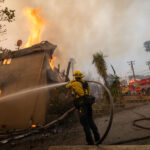A bulletin from Munich Re names the “sovereign debt crisis in Europe and the USA, a sustained phase of low interest rates and heavy natural catastrophe burdens,” as well as general uncertainty in the re/insurance markets as posing “significant challenges for insurers and reinsurers.”
Munich Re singled out “the increasing interconnection of risk,” which has resulted in “areas of regional and industrial accumulation” that have led to “greater uncertainty” and “a challenge to the insurance market.”
The entire sector is particularly affected by the low-interest-rate environment. “Our prudent investment strategy is now proving its worth; investment diversification is more important than ever,” noted Ludger Arnoldussen, member of Munich Re’s Board of Management.
As a result Munich Re pointed out that “due account of the reduced investment income should also be taken in pricing calculations – above all where long-tail risks are concerned.” Arnoldussen explained: “In the current environment, this will be a major issue in the forthcoming renewal negotiations.”
Moreover, the present crisis showed that safeguarding financial market stability is a “key task” for politicians. “Financial market regulation has to improve,” Arnoldussen observed, and with “Solvency II, Europe’s insurance industry is on the right track in this respect.”
However, insurers also face the challenge inherent in the expanding “interconnection of risk. Due to more networked, global supply chains, semiconductor production and the automotive supply industry in particular have a critical exposure to contingent business interruption (CBI) losses,” Munich Re said. “Industrial plants in the northern and Midwestern USA especially are exposed to earthquakes, while production facilities in Japan and Taiwan are additionally exposed to typhoons.”
Arnoldussen indicated that “we will clearly point this out in our discussions with primary insurers and insist on greater transparency regarding these risks. We can only come up with joint solutions given such transparency.”
In addition, the bulletin pointed out that due to the number of catastrophic events, “2011 is proving to be the insurance industry’s costliest year ever. The heavy claims burden has already had an effect on the year’s renewals to date. Nevertheless, price developments have not been uniform across the market.”
Arnoldussen explained that for its part Munich Re has “further improved the quality of the portfolio and increased our premium income. In markets with claims burdens, we have been able to achieve significant natural catastrophe price increases in 2011.” In Australia and New Zealand, for instance, the increase averaged 40–50 percent. Munich Re also realized 10 percent average rate increases on natural catastrophe business in the USA and Latin America. Prices in the rest of the portfolio remained stable.
Munich Re also indicated that it “expects the trend observed thus far to continue in respect of the property-casualty reinsurance renewals coming up at the end of the year.”
Arnoldussen commented: “We are seeing a general stabilization in prices, coupled with hardening markets in a number of segments. Particularly in times of greater uncertainty, staying strictly focused on adequate profitability is more essential than ever.” He added that Munich Re would also approach the renewal discussions with this aim in mind.
Source: Munich Re
Topics Carriers Reinsurance Market
Was this article valuable?
Here are more articles you may enjoy.


 Viewpoint: Artificial Intelligence Is Rewriting the Rules for Commercial Lines
Viewpoint: Artificial Intelligence Is Rewriting the Rules for Commercial Lines  Three Top P/C Insurers Account for Most of Insurance AI Patents
Three Top P/C Insurers Account for Most of Insurance AI Patents  Icahn Money Manager Sues His Bosses and Bausch + Lomb Over Anti-White Bias
Icahn Money Manager Sues His Bosses and Bausch + Lomb Over Anti-White Bias  Catastrophe Bonds Linked to Wildfires Lose ‘Untouchable’ Status
Catastrophe Bonds Linked to Wildfires Lose ‘Untouchable’ Status 

